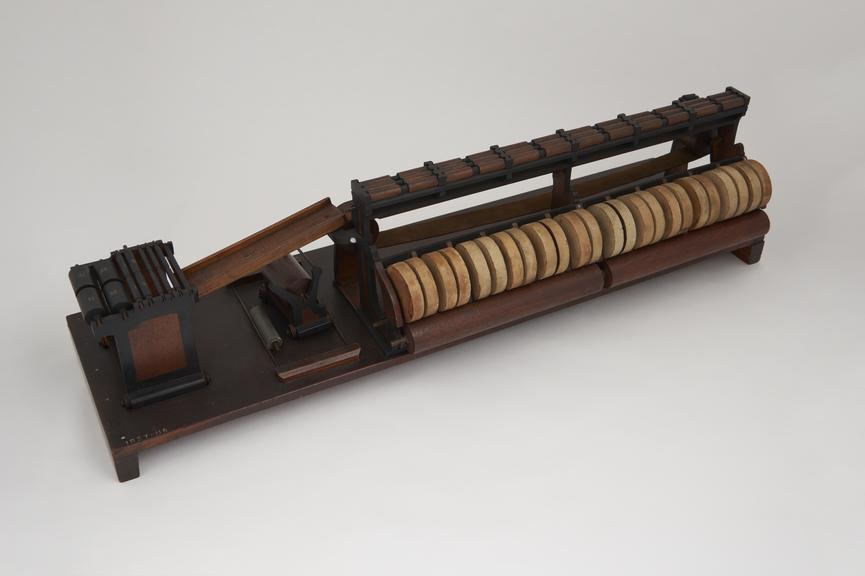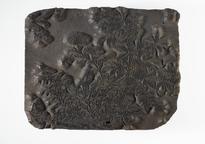

Model of a drawing and lapping machine (scale 1:5) patented by John George Bodmer
- Made:
- 1824 in Manchester
- maker:
- John George Bodmer




Model of a drawing and lapping machine (scale 1:5) patented by John George Bodmer, 1824.
This is a model of John George Bodmer's machine, patented in 1824, for treating cotton during the preparatory stages of the cotton manufacturing process, after it has been scutched and formed into a lap of loosely-twisted cotton fibres. The leading idea of his process was to keep the slivers in the form of lap as long as possible before placing the cotton onto bobbins. In this machine two laps are unrolled side by side and pass together through three pairs of drawing rollers, the last pair of which moves at about 12 times the linear speed of the first; then through a pair of pressing rollers which deliver it upon a travelling band. Upon this band are also delivered the slivers from II other heads, and the lot passes to a conductor along which it travels to the lap- forming attachment, which is in duplicate. This conductor is pivoted near the end of the travelling band, and when a lap is completed at one side of the lap machine the conductor is slewed round so that it delivers the slivers to the other side; then the completed lap is removed, so that the running is continuous. The last set of rollers, through which each sliver passes before it reaches the travelling band, is placed obliquely so that each sliver as it comes off is delivered upon the band parallel with the others, without overlapping.
Details
- Category:
- Textiles Machinery
- Object Number:
- 1857-116
- Measurements:
-
overall: 190 x 740 x 225 mm
- type:
- drawing machine
- credit:
- Bodmer, R.




